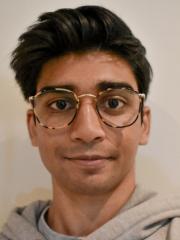
Adrian's research is focused on the development of novel radiopharmaceuticals as diagnostic tools for focal cortical dysplasia (FCD) – a highly prevalent form of drug resistant epilepsy.
From 2016-18, I completed my Bachelor of Science, majoring in chemistry and biochemistry. at the University of Adelaide . In 2019, I achieved a first-class honours in chemistry. The focus of my honours project was developing new and efficient strategy for the synthesis of endiandric acid family of natural products. This concluded with the first ever total synthesis of endiandric acid J and beilcyclone A (Yahiaoiu et al. “Total Synthesis of Endiandric Acid J and Beilcyclone A from Cyclooctatetraene” Chem. Sci., 2020, 11, pp. 9421-9425). From 2020 till the present, I am undertaking a PhD at the University of Queensland where my research is conducted at the Centre of Advanced Imaging (CAI) under the supervision of Professor David Reutens and Associate Professor Brett Paterson. My research is focused on the development of new fluorine-18 based PET imaging probes for a common form of drug resistant epilepsy known as focal cortical dysplasia.
Industry
In addition to my main project I ran a collaborative study with CAI’s industry partners, Clarity Pharmaceutical, Brisbane Veterinary Specialist Centre (BVSC) and Genesis Care. This work was a comparative oncology study focusing on developing new PET imaging probes for canine osteosarcoma. As such I was responsible for coordinating the logistics of this study between CAI, BVSC and Clarity, PET tracer formulation and quality control as well as acquiring approval from the University’s animal ethics committee.
Collaborations
During my time at CAI, I have led a collaborative study with Clarity Pharmaceutical, Brisbane Veterinary Specialist Centre (BVSC), and Genesis Care, focusing on evaluating Clarity’s proprietary radiopharmaceutical “64Cu-SARTATE” for imaging osteosarcoma through a comparative oncology study. This involved managing all practical and administrative aspects, from securing ethics approval to coordinating timelines and logistics across multiple teams (radiochemistry, imaging and animal handling) between CAI and BVSC. As a member of the radiochemistry team, I worked alongside Dr Brett Paterson to adapt and optimise the protocol for preparing 64Cu-SARTATE for canines which had previously not been done. I would radiolabel SARTATE with 64Cu under aseptic conditions and together we would perform quality control protocols, namely radio-HPLC, radio-TLC and endotoxin screening to ensure the product was prepared to a standard suitable for injection. Our efforts resulted in reproducible synthesis of 64Cu-SARTATE (>95% radiochemical purity) which has been validated in 7 live canine models. Ultimately, we found 64Cu-SARTATE to be a highly effective imaging agent for osteosarcoma. The scans acquired by our imaging team were processed by me to generate high quality images and extract quantitative biodistribution data. I recently shared our findings from this work and my PhD research at this year’s Australian and New Zealand Society of Nuclear Medicine conference as an oral presentation. We are currently working with our partners at Clarity to publish this study.
Funding
All funding is received through Australian Research Council (ARC) and the Centre for Innovation in Biomedical Imaging and Technology (CIBIT)
Key Publications
Total Synthesis of Endiandric Acid J and Beilcyclone A from Cyclooctatetraene” Chem. Sci., 2020, 11, pp. 9421-9425).
